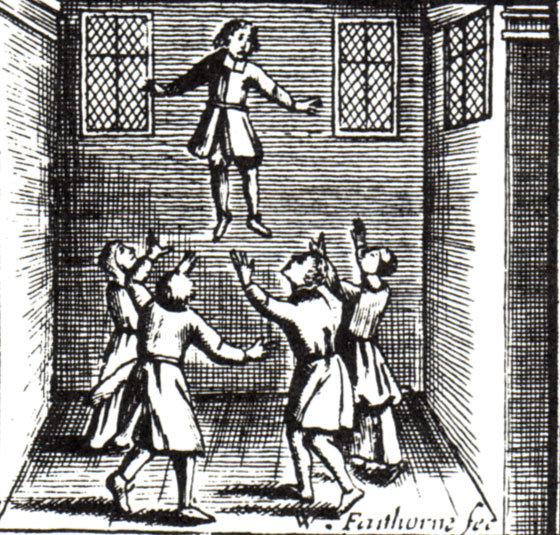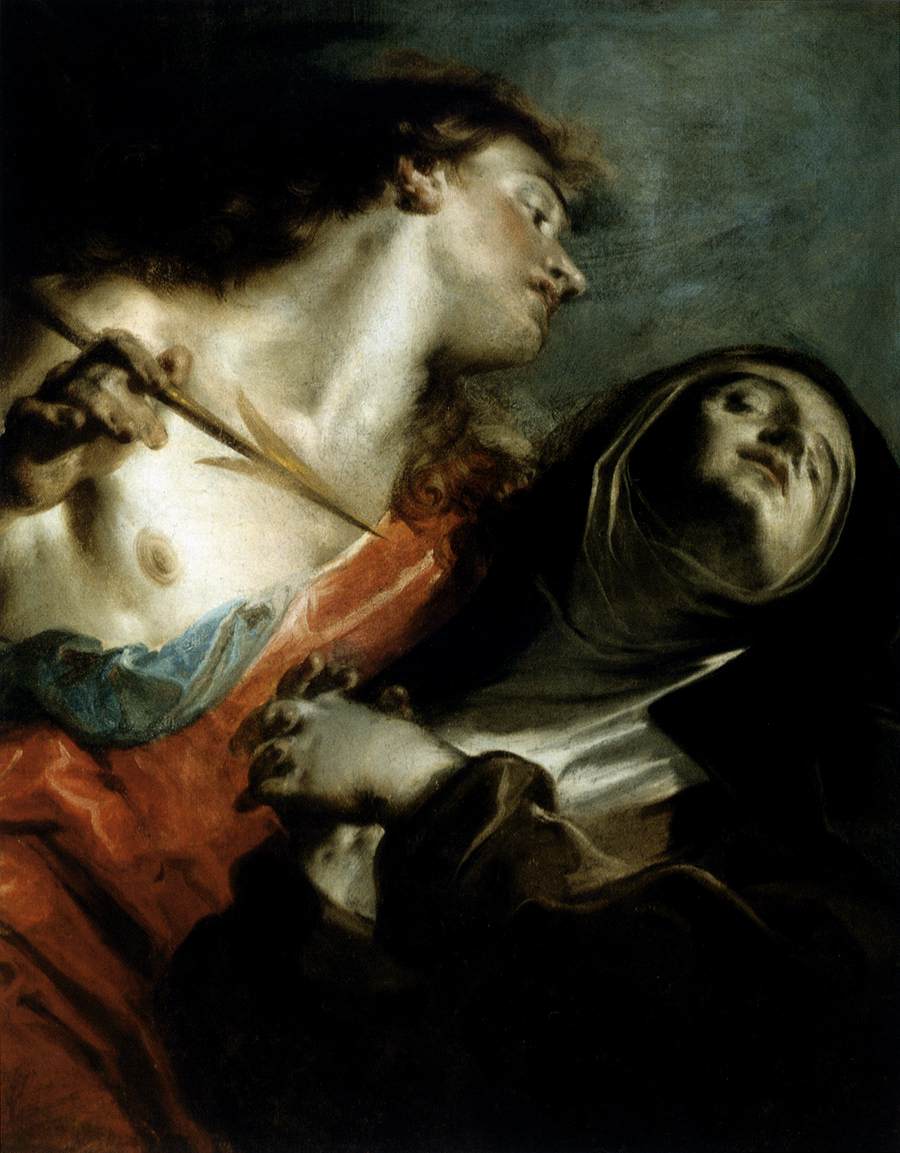|
Credulity, Superstition, And Fanaticism
''Credulity, Superstition and Fanaticism'' is a satirical print by the English artist William Hogarth. It ridicules secular and religious credulity, and lampoons the exaggerated religious "enthusiasm" (excessive emotion, not keenness) of the Methodist movement. The print was originally engraved in 1761, with the title ''Enthusiasm Delineated'', but never published. The original print may have been a response to three essays published by Joshua Reynolds in '' The Idler'' in 1759, praising the sublime work of Italian Counter-Reformation artists. Hogarth reworked the engraving before publishing it on 15 March 1762 as ''Credulity, Superstition and Fanaticism: A Medley''. It echoes his earlier print, ''The Sleeping Congregation'' of 1736, in which an Anglican clergyman's boring sermon puts his congregation to sleep. Interpretation The preacher The print depicts a preacher – possibly an allusion to George Whitefield – speaking to a church congregation from the top of a high pulpit ... [...More Info...] [...Related Items...] OR: [Wikipedia] [Google] [Baidu] |
William Hogarth
William Hogarth (; 10 November 1697 – 26 October 1764) was an English painter, engraver, pictorial satirist, social critic, editorial cartoonist and occasional writer on art. His work ranges from realistic portraiture to comic strip-like series of pictures called "modern moral subjects", and he is perhaps best known for his series '' A Harlot's Progress'', '' A Rake's Progress'' and '' Marriage A-la-Mode''. Knowledge of his work is so pervasive that satirical political illustrations in this style are often referred to as "Hogarthian". Hogarth was born in London to a lower-middle-class family. In his youth he took up an apprenticeship with an engraver, but did not complete the apprenticeship. His father underwent periods of mixed fortune, and was at one time imprisoned in lieu of outstanding debts, an event that is thought to have informed William's paintings and prints with a hard edge. Influenced by French and Italian painting and engraving, Hogarth's works are mostly ... [...More Info...] [...Related Items...] OR: [Wikipedia] [Google] [Baidu] |
Julius Caesar
Gaius Julius Caesar (; ; 12 July 100 BC – 15 March 44 BC), was a Roman general and statesman. A member of the First Triumvirate, Caesar led the Roman armies in the Gallic Wars before defeating his political rival Pompey in a civil war, and subsequently became dictator from 49 BC until his assassination in 44 BC. He played a critical role in the events that led to the demise of the Roman Republic and the rise of the Roman Empire. In 60 BC, Caesar, Crassus and Pompey formed the First Triumvirate, an informal political alliance that dominated Roman politics for several years. Their attempts to amass power as were opposed by the within the Roman Senate, among them Cato the Younger with the frequent support of Cicero. Caesar rose to become one of the most powerful politicians in the Roman Republic through a string of military victories in the Gallic Wars, completed by 51 BC, which greatly extended Roman territory. During this time he both invaded Britain and ... [...More Info...] [...Related Items...] OR: [Wikipedia] [Google] [Baidu] |
Mary Toft
Mary Toft (née Denyer; c. 1701–1763), also spelled Tofts, was an English woman from Godalming, Surrey, who in 1726 became the subject of considerable controversy when she tricked doctors into believing that she had given birth to rabbits. In 1726, Toft became pregnant, but following her reported fascination with the sighting of a rabbit, she miscarried. Her claim to have given birth to various animal parts prompted the arrival of John Howard, a local surgeon, who investigated the matter. He delivered several pieces of animal flesh and duly notified other prominent physicians, which brought the case to the attention of Nathaniel St. André, surgeon to the Royal Household of King George I. St. André concluded that Toft's case was genuine but the king also sent surgeon Cyriacus Ahlers, who remained skeptical. By then quite famous, Toft was brought to London where she was studied in detail; under intense scrutiny and producing no more rabbits she confessed to the hoax ... [...More Info...] [...Related Items...] OR: [Wikipedia] [Google] [Baidu] |
Boy Of Bilson
A boy is a young male human. The term is commonly used for a child or an adolescent. When a male human reaches adulthood, he is described as a man. Definition, etymology, and use According to the ''Merriam-Webster Dictionary'', a boy is "a male child from birth to adulthood". The word "boy" comes from Middle English ''boi, boye'' ("boy, servant"), related to other Germanic words for ''boy'', namely East Frisian ''boi'' ("boy, young man") and West Frisian ''boai'' ("boy"). Although the exact etymology is obscure, the English and Frisian forms probably derive from an earlier Anglo-Frisian *''bō-ja'' ("little brother"), a diminutive of the Germanic root *''bō-'' ("brother, male relation"), from Proto-Indo-European *''bhā-'', *''bhāt-'' ("father, brother"). The root is also found in Norwegian dialectal ''boa'' ("brother"), and, through a reduplicated variant *''bō-bō-'', in Old Norse ''bófi'', Dutch ''boef'' "(criminal) knave, rogue", German ''Bube'' ("knave, rogue, ... [...More Info...] [...Related Items...] OR: [Wikipedia] [Google] [Baidu] |
Drummer Of Tedworth
The Drummer of Tedworth is a case of an alleged poltergeist manifestation in the West Country of England by Joseph Glanvill, from his book ''Saducismus Triumphatus'' (1681). History Early accounts reported that in 1661 a local landowner, John Mompesson, owner of a house in the town of Tedworth (now called Tidworth, in Wiltshire), had brought a lawsuit against an unlicensed vagrant drummer William Drury, whom he accused of collecting money by false pretences. After he had won judgment against the drummer, the drum was turned over to Mompesson by the local bailiff. Mompesson then found his house plagued by nocturnal drumming noises. It was alleged that the drummer had brought these plagues of noise upon Mompesson's head by witchcraft. [...More Info...] [...Related Items...] OR: [Wikipedia] [Google] [Baidu] |
Saducismus Triumphatus
''Saducismus triumphatus'' is a book on witchcraft by Joseph Glanvill, published posthumously in England in 1681. The editor is presumed to have been Henry More, who certainly contributed to the volume; and topical material on witchcraft in Sweden was supplied by Anthony Horneck to later editions. By 1683 this appeared as a lengthy appendix. Horneck's contribution came from a Dutch pamphlet of 1670.Ankarloo, Bengt and Henningsen, Gustav (editors) ''Early Modern European Witchcraft: Centres and Peripheries'' (1990). Oxford: Oxford University Press. p. 431-3. Its composition is mentioned in the chapter on Transportation by an invisible power in the Miscellanies of John Aubrey. The book affirmed the existence of witches with malign supernatural powers of magic, and attacked skepticism concerning their abilities. Glanvill likened these skeptics to the Sadducees, members of a Jewish sect from around the time of Jesus who were said to have denied the immortality of the soul. The ... [...More Info...] [...Related Items...] OR: [Wikipedia] [Google] [Baidu] |
Joseph Glanvill
Joseph Glanvill (1636 – 4 November 1680) was an English writer, philosopher, and clergyman. Not himself a scientist, he has been called "the most skillful apologist of the virtuosi", or in other words the leading propagandist for the approach of the English natural philosophers of the later 17th century. In 1661 he predicted "To converse at the distance of the Indes by means of sympathetic conveyances may be as natural to future times as to us is a literary correspondence." Life He was raised in a strict Puritan household, and educated at Oxford University, where he graduated B.A. from Exeter College in 1655, M.A. from Lincoln College in 1658.''Concise Dictionary of National Biography'' Glanvill was made vicar of Frome in 1662, and was a Fellow of the Royal Society in 1664. He was rector of the Abbey Church at Bath from 1666 to 1680, and prebendary of Worcester in 1678. Works and views He was a Latitudinarian thinker. Latitudinarians generally respected the Cambrid ... [...More Info...] [...Related Items...] OR: [Wikipedia] [Google] [Baidu] |
Forty-four Sermons
This is a list of the sermons of John Wesley, founder of Methodism. ''Sermons on Several Occasions'' ''Sermons on Several Occasions'' is a collection of discourses or sermons published by Wesley, expounding on topics such as salvation by faith, the witness of the Spirit, the means of grace, and Christian perfection. The 44 "standard sermons" are intended to equip Wesley's lay preachers with "a solid doctrinal basis and boundary for homiletical proclamation". The first volume was published in 1746. A second volume followed in 1748 and a third in 1750, making 36 sermons in all. A fourth volume was added in 1760, bringing the total to 43, and in 1762 a 44th sermon was inserted in the second edition of volume 3. These four volumes are collectively known as Wesley's Forty-four Sermons. An additional 97 sermons were printed in several volumes. Wesley was apparently influenced by the Anglican ''Book of Homilies'', in terms of the form (i.e. using sermons as a primary means of communic ... [...More Info...] [...Related Items...] OR: [Wikipedia] [Google] [Baidu] |
John Wesley
John Wesley (; 2 March 1791) was an English cleric, theologian, and evangelist who was a leader of a revival movement within the Church of England known as Methodism. The societies he founded became the dominant form of the independent Methodist movement that continues to this day. Educated at Charterhouse and Christ Church, Oxford, Wesley was elected a fellow of Lincoln College, Oxford, in 1726 and ordained as an Anglican priest two years later. At Oxford, he led the " Holy Club", a society formed for the purpose of the study and the pursuit of a devout Christian life; it had been founded by his brother Charles and counted George Whitefield among its members. After an unsuccessful ministry of two years, serving at Christ Church, in the Georgia colony of Savannah, he returned to London and joined a religious society led by Moravian Christians. On 24 May 1738, he experienced what has come to be called his evangelical conversion, when he felt his "heart strangely warmed ... [...More Info...] [...Related Items...] OR: [Wikipedia] [Google] [Baidu] |
Religious Ecstasy
Religious ecstasy is a type of altered state of consciousness characterized by greatly reduced external awareness and expanded interior mental and spiritual awareness, frequently accompanied by visions and emotional (and sometimes physical) euphoria. Although the experience is usually brief in time, there are records of such experiences lasting several days or even more, and of recurring experiences of ecstasy during one's lifetime. In Sufism, the term is referred to as ''wajad'' and the experience is referred to as either ''jazbah (jadbah o jedbah for Maghreb)'' or ''majzoobiyat''. Context The adjective "religious" means that the experience occurs in connection with religious activities or is interpreted in context of a religion. Journalist Marghanita Laski writes in her study "Ecstasy in Religious and Secular Experiences", first published in 1961: "Epithets are very often applied to mystical experiences including ecstasies without, apparently, any clear idea about the dis ... [...More Info...] [...Related Items...] OR: [Wikipedia] [Google] [Baidu] |
Cock Lane Ghost
The Cock Lane ghost was a purported haunting that attracted mass public attention in 1762. The location was a lodging in Cock Lane, a short road adjacent to London's Smithfield market and a few minutes' walk from St Paul's Cathedral. The event centred on three people: William Kent, a usurer from Norfolk; Richard Parsons, a parish clerk; and Parsons' daughter Elizabeth. Following the death during childbirth of Kent's wife, Elizabeth Lynes, he became romantically involved with her sister, Fanny. Canon law prevented the couple from marrying, but they nevertheless moved to London and lodged at the property in Cock Lane, then owned by Parsons. Several accounts of strange knocking sounds and ghostly apparitions were reported, although for the most part they stopped after the couple moved out, but following Fanny's death from smallpox and Kent's successful legal action against Parsons over an outstanding debt, they resumed. Parsons claimed that Fanny's ghost haunted his property a ... [...More Info...] [...Related Items...] OR: [Wikipedia] [Google] [Baidu] |
Box Pew
A box pew is a type of church pew that is encased in panelling and was prevalent in England and other Protestant countries from the 16th to early 19th centuries. History in England Before the rise of Protestantism, seating was not customary in churches and only accorded to the lord of the manor, civic dignitaries and finally churchwardens. After 1569 stools and seating were installed in Protestant churches primarily because the congregation were expected to listen to sermons, and various types of seating were introduced including the box pew. There are records of box pews being installed in Ludlow parish church before 1577. Box pews provided privacy and allowed the family to sit together. In the 17th century they could include windows, curtains, tables and even fireplaces, and were treated as personal property that could be willed to legatees. Sometimes the panelling was so high it was difficult to see out, and the privacy was used as a cover for non-devotional activity. William Ho ... [...More Info...] [...Related Items...] OR: [Wikipedia] [Google] [Baidu] |










